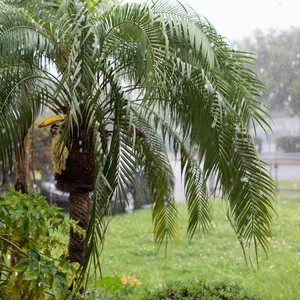If you’ve ever spent late summer months in Charleston, SC, you’ve likely experienced the awe-inspiring and sometimes intense afternoon thunderstorms that grace the region. These frequent weather occurrences have become a hallmark of the area’s climate during this time of year. In this article, we delve into the reasons behind the prevalence of afternoon thunderstorms in Charleston and explore the local statistics while highlighting the numerous benefits that these storms bring to the region.
1. Atmospheric Ingredients: A Recipe for Thunderstorms
Charleston’s afternoon thunderstorms are a product of several atmospheric factors working together harmoniously. During late summer, the region experiences warm and humid conditions due to its coastal location. As the sun beats down on the land and water, the air heats up, leading to the formation of cumulus clouds.
Additionally, the nearby Atlantic Ocean provides a source of moisture, creating an environment ripe for convective activity. Rising warm air combines with the moist air, forming towering cumulonimbus clouds that can reach impressive heights.
2. Afternoon Thunderstorm Frequency
Late summer, typically from July to September, marks the peak of Charleston’s afternoon thunderstorm season. According to local weather records, the area experiences an average of 14 to 20 thunderstorm days during these months. Moreover, the city receives around 7 to 9 inches of rainfall per month during this period.
The storms usually develop in the late afternoon or early evening and can last for several hours. They bring a mix of torrential rain, frequent lightning, and occasional gusty winds.
 3. Cooling and Cleansing Effect
3. Cooling and Cleansing Effect
One of the most apparent benefits of afternoon thunderstorms is their cooling effect on Charleston’s hot and humid days. As rain falls from the towering clouds, it cools the surrounding air, providing much-needed relief to both residents and visitors. The sudden drop in temperature can be particularly refreshing after sweltering summer days.
Moreover, these storms act as nature’s cleansing agent, washing away accumulated pollutants, dust, and allergens from the atmosphere, leading to improved air quality. This cleansing effect contributes to a fresher and more pleasant environment for all.
4. Sustaining Local Ecosystems
Charleston’s unique coastal ecosystems, including marshes and wetlands, greatly benefit from the regular afternoon thunderstorms. The rainfall replenishes water levels in these areas, ensuring they remain healthy and thriving. This water influx is crucial for supporting diverse wildlife, including birds, fish, and other aquatic species that call these habitats home.
Additionally, the storms nourish vegetation and encourage plant growth, adding to the overall beauty of Charleston’s landscape. The lush greenery resulting from the ample water supply enhances the city’s natural charm and aesthetic appeal.
5. Boosting Water Resources
Charleston, like many parts of the world, occasionally faces water scarcity and drought conditions during the summer. The afternoon thunderstorms play a crucial role in replenishing water resources, refilling reservoirs, and recharging groundwater levels. This is vital for maintaining a stable water supply for the city and surrounding communities, supporting agricultural activities, and preserving local ecosystems.
Afternoon thunderstorms are an integral part of Charleston, SC’s late summer experience, adding drama, excitement, and numerous benefits to the region. Driven by warm and humid conditions, these thunderstorms bring relief from the heat, cleanse the air, and sustain the area’s diverse ecosystems. They also play a vital role in replenishing water resources, ensuring a stable water supply for the city and its inhabitants.
So, the next time you witness a spectacular thunderstorm rolling through Charleston, take a moment to appreciate the natural wonders at play and the valuable contributions these storms make to the region’s well-being.


